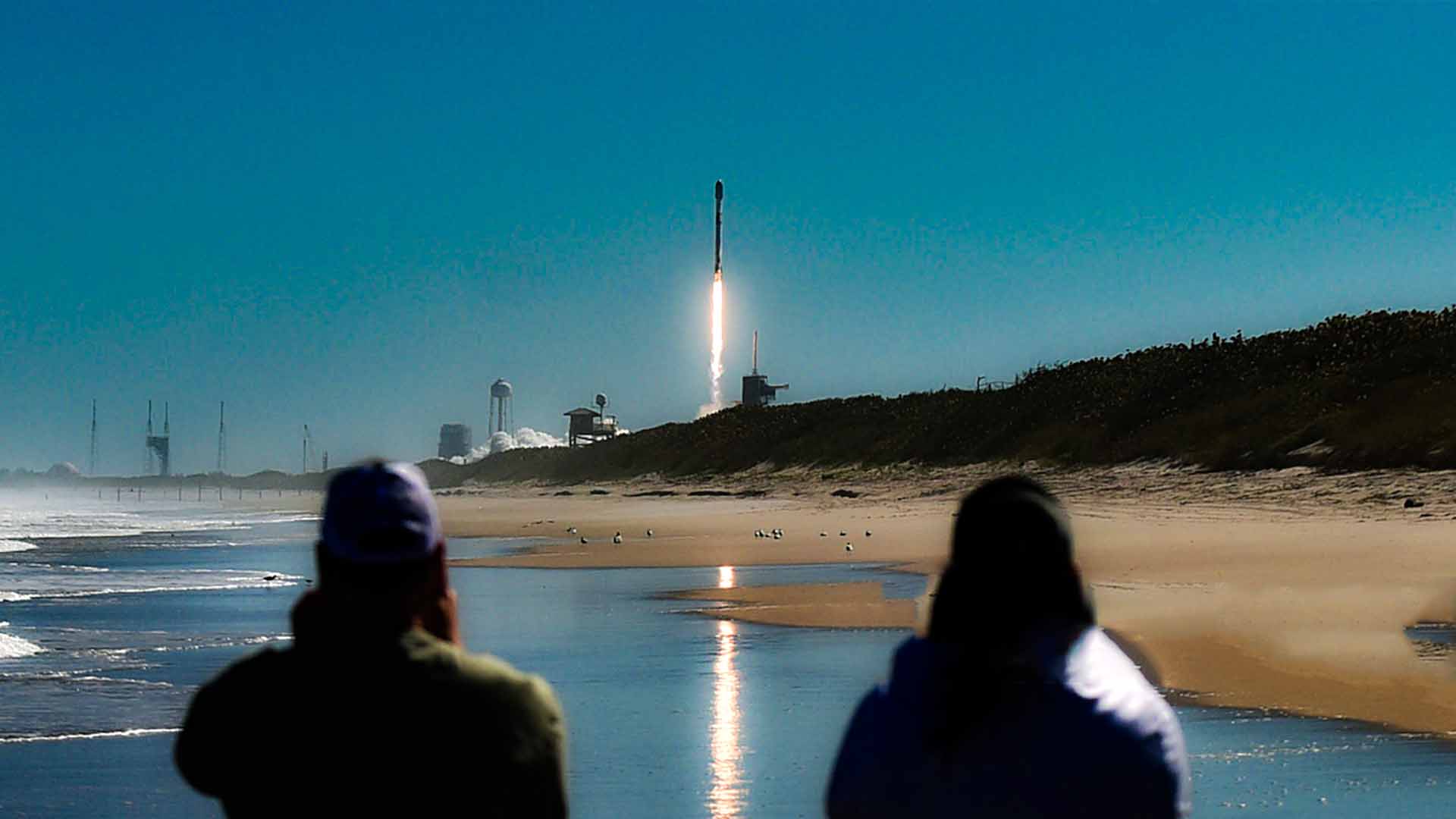SpaceX has once again demonstrated its industry-leading prowess in space exploration and satellite deployment with its latest Starlink launch. On the morning of January 13, 2025, a Falcon 9 rocket lifted off from Florida’s Cape Canaveral Space Force Station at precisely 11:47 a.m. EST (1647 GMT).
This mission carried 21 Starlink satellites, including 13 equipped with cutting-edge “direct-to-cell” capabilities, furthering SpaceX’s ambitious goal of providing high-speed, global internet access to even the most remote areas of the world.
The Falcon 9’s first-stage booster, which is designed for reuse, successfully landed on the autonomous drone ship A Shortfall of Gravitas stationed in the Atlantic Ocean approximately eight minutes after liftoff.
This marked the 15th successful flight and landing for this particular booster, showcasing the significant cost savings and sustainability benefits of SpaceX’s reusable rocket technology.
This specific booster has a storied history, having supported a variety of missions. Eight of its 14 prior flights were dedicated to deploying Starlink satellites, while two were crewed missions to the International Space Station (ISS) in partnership with Houston-based Axiom Space.
This reuse underscores SpaceX’s capability to efficiently turn around launch vehicles for multiple missions, a key factor in maintaining its aggressive launch cadence.
The upper stage of the Falcon 9 continued its journey after the booster separation, carrying the 21 Starlink satellites to low Earth orbit (LEO). Deployment occurred approximately 65 minutes after liftoff, as planned.
The satellites are part of the next-generation Starlink constellation, which is designed to enhance global connectivity by providing internet service directly to user terminals on the ground. The new “direct-to-cell” technology takes this a step further, enabling connectivity directly to mobile phones without the need for traditional ground-based cell towers.
This innovation has the potential to revolutionize communication in underserved regions, disaster-stricken areas, and even remote seas and skies.
This morning’s launch was SpaceX’s sixth mission of 2025, an impressive pace considering the year has barely begun. It follows a record-breaking 2024, during which SpaceX completed over 130 Falcon 9 missions, with roughly two-thirds dedicated to Starlink deployments.
This aggressive launch schedule reflects the company’s commitment to rapidly expanding its satellite constellation, which already consists of thousands of satellites in orbit.
The Starlink project represents a significant step forward in the democratization of internet access. Traditional internet service providers rely heavily on ground-based infrastructure, which can be prohibitively expensive or logistically unfeasible to deploy in certain areas.
In contrast, Starlink’s satellite-based system bypasses these limitations, bringing high-speed internet to locations previously considered unreachable. The addition of direct-to-cell technology further broadens the range of applications, from everyday communication to emergency response and even support for autonomous vehicles in remote areas.
The successful recovery of the Falcon 9 booster also underscores SpaceX’s leadership in spaceflight sustainability. Reusable rockets not only reduce costs but also minimize waste, making frequent space travel more environmentally friendly. This innovation is crucial as humanity continues to expand its presence in space, with SpaceX at the forefront of both commercial and exploratory missions.
As SpaceX continues its ambitious Starlink program, it faces challenges and opportunities on multiple fronts. The company must navigate regulatory hurdles, particularly in countries where satellite internet services are heavily regulated or restricted.
Additionally, the growing number of satellites in orbit raises concerns about space debris and congestion, prompting SpaceX to incorporate deorbiting mechanisms and collision avoidance technologies in its designs.
Despite these challenges, SpaceX’s achievements have set a high standard for the aerospace industry. The company’s ability to consistently innovate and execute missions with precision has solidified its reputation as a leader in space exploration and satellite deployment.
This morning’s launch is yet another milestone in SpaceX’s journey to connect the world through space-based technology, bringing us closer to a future where high-speed internet is truly universal.
